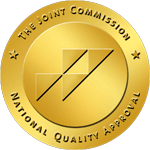Residential addiction treatment facilities are as varied as college campuses. Finding the right match is a detailed process, which involves research and discovery.
Getting There
Perhaps you’ve visited the residential treatment facility. Perhaps you’ve spoken to an addiction specialist over the phone. The first thing you have to do is arrive.
Private transportation can be provided, especially if the client is arriving from the airport; a car service can also be arranged, depending on the departure location and preference of the client. Other clients choose to have family members or loved ones take them to residential treatment for the first time.
First Days
Upon arrival, a team of well-trained, caring staff members will greet and assist the client with accommodations. Getting settled in is an important part of the arrival process. Feeling comfortable in new surroundings and getting to know fellow residents will assist in the transition, so you can feel at home. Daily meals are one of the specialties of some treatment facilities and many offer private chefs with specialized dining plans. The first evening can be a delicious discovery of the types of nutritional benefits of attending a residential treatment facility. Read about the Summit Difference Here
Routine
As the staff will kindly let you know, the daily regiment in treatment includes a routine, which offers comfort and stability, with room for variation. Depending on the special activities offered at the facility, daily schedules may vary. One day may include equine therapy, while another, a trip to the beach for an outdoor excursion. Most days will include the basic tenets of the recovery center’s mission and philosophy: individualized therapy, group therapy, 12-step meetings, exercise, and leisure activities as part of a daily regiment.
Therapy
Each day or week may include additional therapy sessions to enhance the experience in treatment. For instance, family group therapy will support the experience, increasing the likelihood of long-term sobriety for the client, offering a greater chance for the family to recover, as well. At various points throughout the client’s stay, meetings with counselors and individual therapists will aid in the development process. Clients can assess their growth and discover new tools to use in their daily lives.
At a certain point in treatment, the client may discuss with a counselor possible plans for the future: living accommodations, family arrangements, professional questions, social adjustments, and potential aftercare. Clients may decide to stay at residential treatment for 30 days or six months, depending on the level of care necessary. In 12-step meetings, 30, 60, and 90 days are used as markers to denote different levels of growth in sobriety. At six months, a client may feel much stronger in their recovery and will have returned to a much more stable style of living and being.
The Future
Upon graduation of a residential treatment program, clients may keep in contact with the residential treatment facility, after they have left. Perhaps there are on-campus meetings to attend or a particular staff member to visit.
On a daily basis, residential treatment works to serve the greatest good of the client, meeting their needs and adjusting to their strengths and weaknesses. Just like going to school, the learning never ends. The journey of recovery begins in residential treatment, and will always hold a special place in the memory of the individual in recovery.


